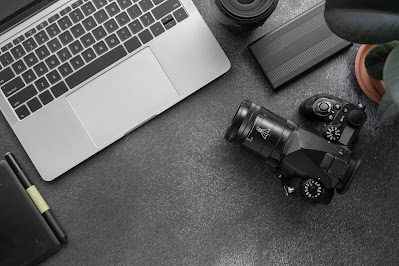Yvette Heiser - Mastering Night-time Food Photography in the Heart of Texas
Night-time food photography is an art
that requires precision, creativity, and an intimate understanding of light. Yvette Heiser- Mastering Night-time Food Photography in the Heart of Texas,
a renowned Texas-based food photographer, has become a leading figure in this
niche, known for her ability to capture the beauty and allure of food in
low-light environments. By mastering the unique challenges of photographing
food after dark, Heiser has carved a distinctive style that blends the beauty
of food with the mystery of night settings. In this article, we’ll explore
Heiser’s techniques and how you can bring the magic of night-time food photography.
1. Embrace the Power of Low-Key Lighting
One
of the hallmarks of Yvette Heiser's night-time food photography is her use of
low-key lighting. Low-key lighting is a technique that focuses on minimal
lighting to create dramatic shadows and highlights, adding depth and intrigue
to the image. For Heiser, this approach not only enhances the textures of the
food but also evokes a moody, cinematic atmosphere that makes the food feel
almost otherworldly.
To
replicate Heiser's technique, use a single light source, such as a softbox or
directional LED light, placed at an angle to your subject. Heiser recommends
using dim lighting to allow shadows to form naturally, keeping the mood dark
and mysterious. Experiment with the position of your light to find the sweet
spot where your subject pops against the darkness.
2. Choosing the Right Environment
The
beauty of night-time food photography is its ability to tell a story with both
the food and its surroundings. Heiser often takes advantage of the rustic charm
and natural beauty found in the Texas landscape, using textured surfaces like
wood tables, stone countertops, and even rustic backdrops that add character to
her shots.
When
photographing food in a night setting, it's important to select the right
environment that complements the mood you want to evoke. Heiser uses simple but
effective backgrounds that create a sense of place without distracting from the
food. For instance, dark linens or wooden surfaces can enhance the warmth and
richness of a dish while creating contrast against the dim lighting.
3. Capture the Textures: Focus on Detail
Night-time
food photography is about more than just the mood—it’s also about highlighting
the intricate details that make food visually compelling. Heiser’s images often
showcase the textures of the food, whether it’s the glossy sheen of a decadent
dessert or the crispy edges of a well-cooked steak.
To
achieve similar results, focus on capturing close-up shots that highlight
texture. Use a shallow depth of field (around f/2.8 or f/4) to blur the
background and emphasize the details of the food. This technique isolates the
subject and makes the textures stand out. Whether it’s the creaminess of a
sauce or the crispness of a crust, Heiser’s work shows how attention to detail
can elevate food photography.
4. Use Shadows to Enhance Depth and Drama
Shadows
play a critical role in Heiser’s night-time food photography. Rather than
trying to eliminate them, she embraces them to enhance the depth of the image.
Shadows can create a sense of mystery and intrigue, drawing the viewer’s eye to
certain parts of the dish. Heiser often uses shadows to accentuate the curves
and textures of the food, making them appear almost sculptural.
When
shooting in low light, allow the shadows to take shape naturally. Position your
light source at different angles to see how the shadows fall across your
subject. The key is to let the darkness do some of the work, creating a
visually striking contrast between the illuminated areas and the darker parts
of the scene.
5. Post-Processing for a Cinematic Finish
After the shot is taken, Heiser enhances her
images in post-processing to add even more drama and impact. Editing allows her
to further sculpt the lighting, adjust the contrast, and fine-tune the colors
to match her intended aesthetic. For night-time photography, Heiser often
deepens the shadows, adds a subtle vignette, and enhances the highlights to
create a cinematic, almost dreamlike feel. Yvette Heiser– Learn the fundamentals of photography with Yvette Heiser, Texas, is an
excellent resource for those who want to dive deeper into the essentials of
photography and refine their skills.
For
those looking to replicate her style, use editing software like Lightroom or
Photoshop to adjust the exposure, contrast, and color balance. Adding warmth to
the tones can help bring out the richness of the food, while a slight increase
in contrast can highlight the textures and details.
6. The Texas Influence: A Sense of Place
What
truly sets Heiser’s work apart is the influence of her Texas roots. The rugged
beauty of the Texas landscape, from its sunsets to its rustic interiors, seeps
into her photography style. The warm, earthy tones found in the state’s natural
environments often reflect in her choice of props and backgrounds, creating a
sense of place that complements the rich, flavorful foods she photographs.
For
photographers, incorporating a sense of place into their work can enhance the
narrative. Whether you’re shooting in Texas or another region, think about how
the location and its atmosphere can influence the story your photos tell. By
connecting food to the environment, you create a deeper, more immersive
experience for the viewer.
Final Thoughts
Yvette Heiser’s mastery of night-time food photography, combined with her unique Texas-based aesthetic, has made her a standout figure in the photography world. Through her use of low-key lighting, attention to detail, and incorporation of local influences, Heiser has created a distinctive style that continues to inspire photographers. Whether you’re shooting in the heart of Texas or your own kitchen, the techniques outlined here will help you bring the magic of night-time food photography into your own work.




Comments
Post a Comment